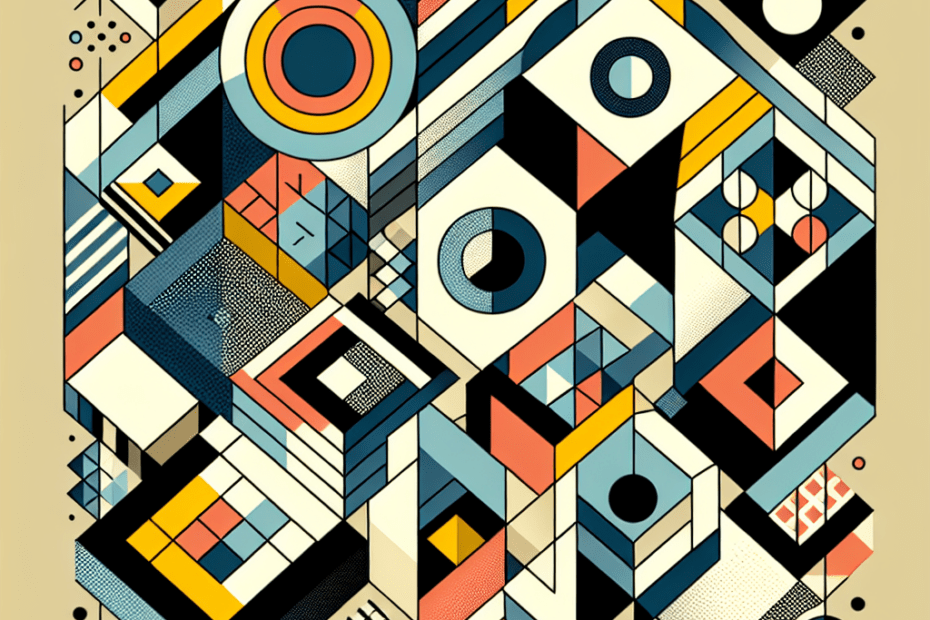“`html
Designing with Geometric Shapes for a Bold, Modern Look
In today’s rapidly evolving design landscape, geometric shapes have carved a niche, offering a bold and modern aesthetic. Designers and architects alike turn to geometric shapes in modern design to create visual interest, foster a sense of balance, and convey contemporary elegance. Whether in architecture, interior design, or graphic art, these shapes captivate and inspire.
Their appeal lies in their versatility, simplicity, and ability to transform an ordinary space into something extraordinary. By incorporating triangles, circles, squares, and hexagons, designers achieve a cohesive visual language that speaks to current design trends. According to Architectural Digest, around 65% of contemporary styles in 2023 integrated some form of geometric pattern, showcasing their prominence and continued rise in popularity.
The Role of Geometric Shapes in Modern Design
Geometric shapes remain a cornerstone in the modern design realm, providing structure and function. They’re not limited to their visual appeal but extend into the realm of useful applications, acting as both focal points and subtle background elements. For instance, circles might soften the hard edges of a room, while squares lend themselves to defining space.
With their clean lines and clear structures, geometric shapes offer a minimalistic yet expressive means to convey messages and create harmonious environments. Diverse industries capitalize on their adaptability, using them in everything from branding materials to architecture. The balance between aesthetics and functionality makes geometric shapes a preferred choice for many designers aiming for a modern look.
Key Benefits of Using Geometric Shapes
- Visual Clarity: The clarity and precision provided by geometric shapes enhance a design’s readability, making it easy for audiences to understand a piece quickly.
- Modern Aesthetics: As symbols of modernism, these shapes introduce a fresh and forward-thinking vibe to design projects. They signify innovation and progress.
- Versatility: Geometric shapes fit seamlessly into various design contexts, whether minimalist, contemporary, or even industrial styles.
Trends and Statistics in Geometric Design
| Aspect | Percentage of Use in 2023 |
|---|---|
| Interior Design | 52% |
| Graphic Design | 70% |
| Architectural Design | 65% |
These statistics highlight the pervasive nature of geometric designs across various fields, as stated by Design Shack. This growing trend reflects an increasing demand for modern design elements that communicate luxury and simplicity simultaneously.
Incorporating Geometric Shapes in Various Domains
Architecture
Architects use geometric shapes to craft awe-inspiring buildings that often defy traditional design forms. From the world-renowned Louvre Pyramid to the striking facade of the Sydney Opera House, geometric shapes prove vital in pushing architectural boundaries.
Interior Design
Inside homes, geometric patterns adorn walls, furniture, and decorative accessories. Hexagonal tiles can serve as an eye-catching backsplash, while diamond patterns on carpets provide depth and dimension to floors.
Graphic Design
Designers utilize geometric shapes in logos, typography, and layouts, creating crisp and memorable graphic materials. The strategic placement and repetition of said shapes contribute to a cohesive and trendy design language.
Fashion
Fashion designers often lean into geometric shapes for bold prints and textiles. These patterns can make a statement piece or an entire ensemble stand out, exuding confidence and a modern edge.
Key Takeaways
- Geometric shapes in modern design offer clean lines, visual clarity, and a contemporary aesthetic.
- Trends show that their usage spans various industries, showcasing their versatility.
- These designs are pivotal in conveying modernism and innovation across domains like architecture, graphic design, and fashion.
- Statistics display a significant adoption rate of geometric shapes, indicating their integral role in today’s design world.
FAQ
- Why are geometric shapes popular in modern design?
Geometric shapes are favored for their clear lines and modern aesthetic, which convey innovation and progress. They are versatile and can enhance readability and structural form in a design. - Can geometric shapes be used in traditional designs?
Yes, while they are commonly associated with modern design, geometric shapes can be adapted to complement traditional elements, providing a refreshing contrast. - How do geometric shapes impact visual perception?
Geometric shapes guide the viewer’s eye and create focal points in a design. Their regular forms provide a sense of order and harmony. - What types of geometric shapes are most commonly used?
Triangles, circles, squares, and hexagons are popular choices due to their simplicity and ease of incorporation into various design styles. - Are there any drawbacks to using geometric shapes excessively?
Overusing geometric shapes can lead to a repetitive and monotonous design. It’s essential to balance them with other elements for a well-rounded approach.
“`
